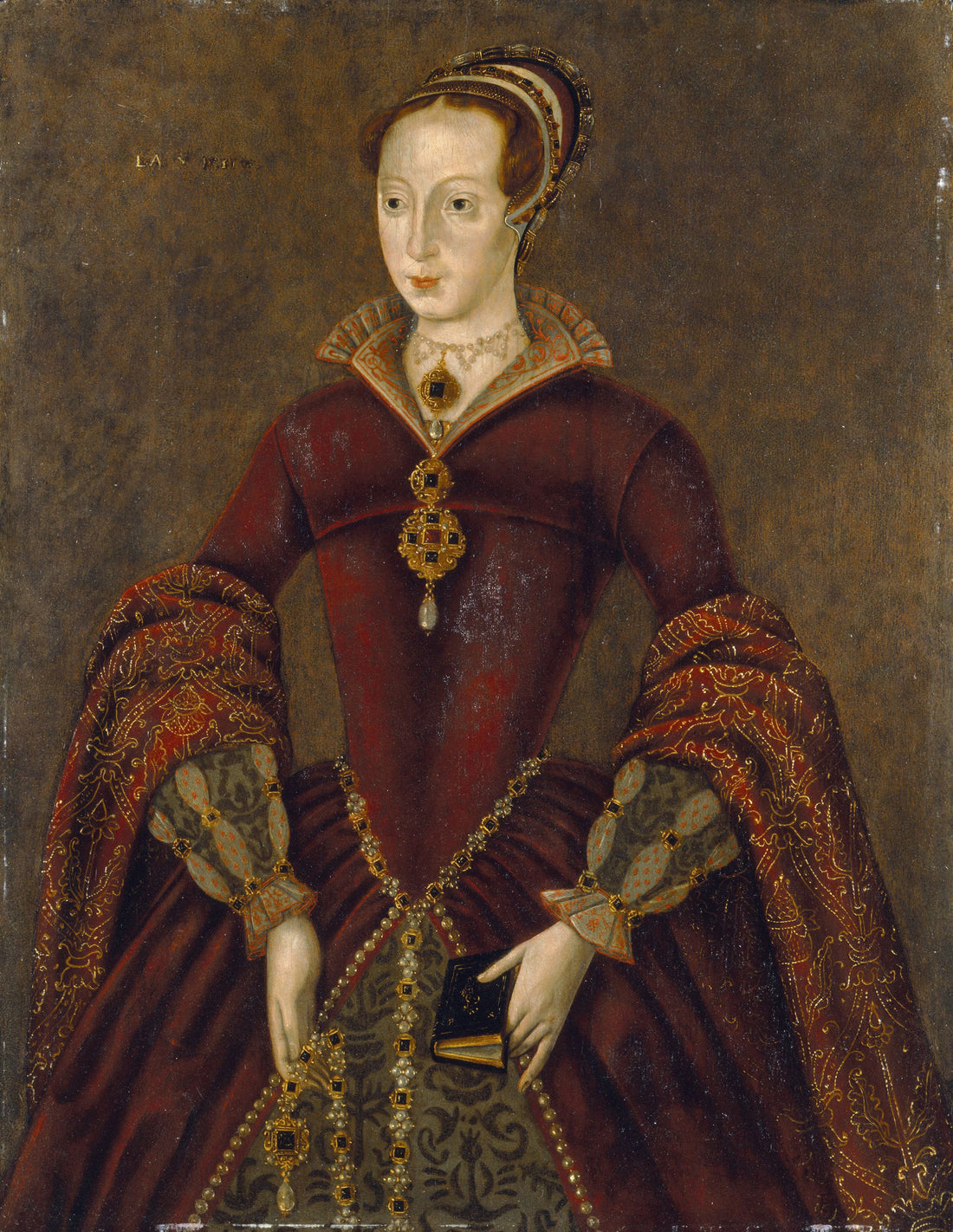
Lady Jane Grey: The Tragic Tudor Queen
Lady Jane Grey remains one of the most poignant figures of the Tudor era. Known as the “Nine Days Queen,” her brief and ill-fated reign was the result of political ambition, religious strife, and dynastic manoeuvring. Yet, before she was thrust onto the throne against her will, Jane was an intelligent and highly educated young woman whose early life was shaped by strict discipline and the expectations placed on Tudor women. Her story is one of both brilliance and tragedy, a reflection of the perils faced by noblewomen in 16th-century England.
Early Life and Education
Born in October 1537, Lady Jane Grey was the eldest daughter of Henry Grey, Duke of Suffolk, and Frances Brandon, who was the niece of Henry VIII. This lineage placed Jane in the Tudor line of succession, though she was never expected to rule. However, her parents were ambitious, and as was common for Tudor women of noble birth, Jane was seen as a political asset rather than an individual with personal agency.
Jane’s childhood was marked by strict discipline. She later recounted how her parents enforced high expectations through severe punishments, describing how she was beaten and chastised for any perceived failure. Unlike many noblewomen of her time, Jane found little joy in courtly life. Instead, she sought solace in her studies.
A precocious child, Jane became one of the most learned Tudor women of her generation. She studied under some of the greatest scholars of the time, including John Aylmer, and was proficient in Latin, Greek, Hebrew, and French. Her intelligence and deep Protestant faith set her apart. Unlike many Tudor women, who were expected to focus on marriage and courtly duties, Jane’s education gave her a unique perspective, one that would later define her tragic fate.
A Pawn in Tudor Politics
Despite her love for learning, Jane could not escape the political intrigues of the Tudor court. By the early 1550s, England was in religious and political turmoil. King Edward VI, a staunch Protestant, was dying, and his Catholic half-sister Mary Tudor was next in line for the throne. Edward’s advisors, particularly John Dudley, Duke of Northumberland, feared that Mary’s ascension would reverse Protestant reforms.
Northumberland orchestrated a plan to place Jane on the throne. She was married in May 1553 to his son, Guildford Dudley, a move designed to strengthen her claim. When Edward VI died on July 6, 1553, Northumberland’s plan went into action. Edward had named Jane his successor in a document called My Devise for the Succession, bypassing both Mary and Elizabeth Tudor in favor of a Protestant queen. Jane, just 15 years old, was informed that she was now Queen of England.
The Nine Days Queen
On July 10, 1553, Jane was taken to the Tower of London, as was the custom for new monarchs. However, unlike Henry VIII’s grand coronation, her reign was immediately fraught with challenges. Jane was never a ruler by her own ambition. According to historical accounts, she expressed reluctance, reportedly saying, “The crown is not my right, and pleases me not.”
Meanwhile, Mary Tudor was gathering support. The people of England, weary of political manipulation, largely viewed Mary as the rightful heir. Key nobles, including members of Jane’s own council, abandoned her cause and sided with Mary. Even her own father, the Duke of Suffolk, declared allegiance to Mary in a desperate attempt to save himself.
By July 19, just nine days after Jane was declared queen, Mary was officially proclaimed the ruler of England. Jane’s brief reign had ended before she had ever truly exercised power.
Imprisonment and Trial
Following Mary’s victory, Jane and her husband Guildford were imprisoned in the Tower of London. At first, Mary seemed inclined to show leniency. She recognized that Jane had been a pawn in Northumberland’s political scheme and initially spared her life. However, this clemency would not last.
In early 1554, Jane’s father joined the Wyatt Rebellion, a Protestant-led uprising against Mary’s planned marriage to Philip of Spain. Though Jane had no involvement, her existence now posed a direct threat to Mary’s rule. The queen could not risk Protestant factions using Jane as a figurehead for further revolts.
On February 12, 1554, Jane was led to her execution. Despite her young age, she faced her fate with remarkable composure. She walked to the scaffold, carrying a small prayer book, and recited Psalm 51. In a tragic moment, she struggled to find the execution block and, blindfolded, cried out, “What shall I do? Where is it?” before a bystander guided her. Moments later, she was beheaded.
Legacy of Lady Jane Grey
Lady Jane Grey’s story is one of intelligence, faith, and political tragedy. She was a victim of the power struggles that defined Tudor England, a young woman whose fate was dictated by the ambitions of men. Unlike many Tudor women, who conformed to the expectations of marriage and courtly life, Jane’s education and Protestant convictions made her stand out. However, these same qualities also sealed her fate.
Her legacy endures as a cautionary tale of political manipulation and the dangers of power. Though she reigned for only nine days, her intelligence and steadfast faith continue to captivate historians and admirers alike. In a world where Tudor women were often confined to the sidelines of history, Jane Grey remains a figure of tragic prominence, a queen who never truly ruled but whose story still resonates centuries later.

